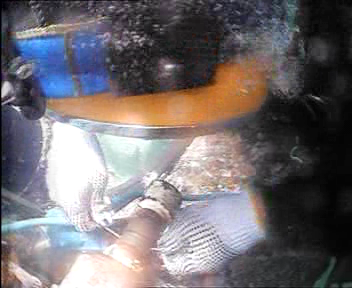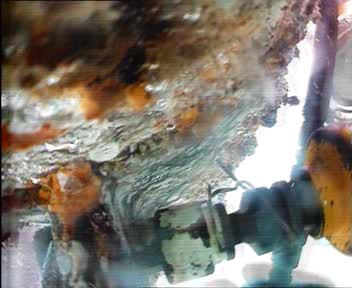Hand injury while using hydraulic impact wrench
A member has reported an incident in which a diver sustained a cut injury to his left hand palm whilst working with a hydraulic impact wrench. A team of two divers were engaged in removing bolts of an old riser clamp at shallow depths. During one such bolt removal, when the first diver held the wrench’s trigger handle using one hand, the wrench socket came off from the bolt and the wrench began to fall. He attempted to prevent the wrench from falling to the seabed, and whilst doing so, his left hand came in contact with the rotating/revolving socket, and the socket retaining pin (makeshift welding rod) cut the palm of his left hand.
The diver was safely and promptly recovered to surface and provided with first aid. Then he was sent to the doctor for further evaluation. He resumed duty on the same day.
An investigation revealed that a long welding rod twisted around the socket had been used as a retaining pin to prevent the socket from falling off during use. This practice was considered ‘normal’.


The following actions were taken to prevent recurrence:
- As advised by the manufacturer, use of the correct size and length of retaining pin, covered by an O-ring, to secure the socket.


Safety Event
Published: 27 July 2011
Download: IMCA SF 08/11
IMCA Safety Flashes
Submit a Report
IMCA Safety Flashes summarise key safety matters and incidents, allowing lessons to be more easily learnt for the benefit of all. The effectiveness of the IMCA Safety Flash system depends on Members sharing information and so avoiding repeat incidents. Please consider adding safetyreports@imca-int.com to your internal distribution list for safety alerts or manually submitting information on incidents you consider may be relevant. All information is anonymised or sanitised, as appropriate.
IMCA’s store terms and conditions (https://www.imca-int.com/legal-notices/terms/) apply to all downloads from IMCA’s website, including this document.
IMCA makes every effort to ensure the accuracy and reliability of the data contained in the documents it publishes, but IMCA shall not be liable for any guidance and/or recommendation and/or statement herein contained. The information contained in this document does not fulfil or replace any individual’s or Member's legal, regulatory or other duties or obligations in respect of their operations. Individuals and Members remain solely responsible for the safe, lawful and proper conduct of their operations.
